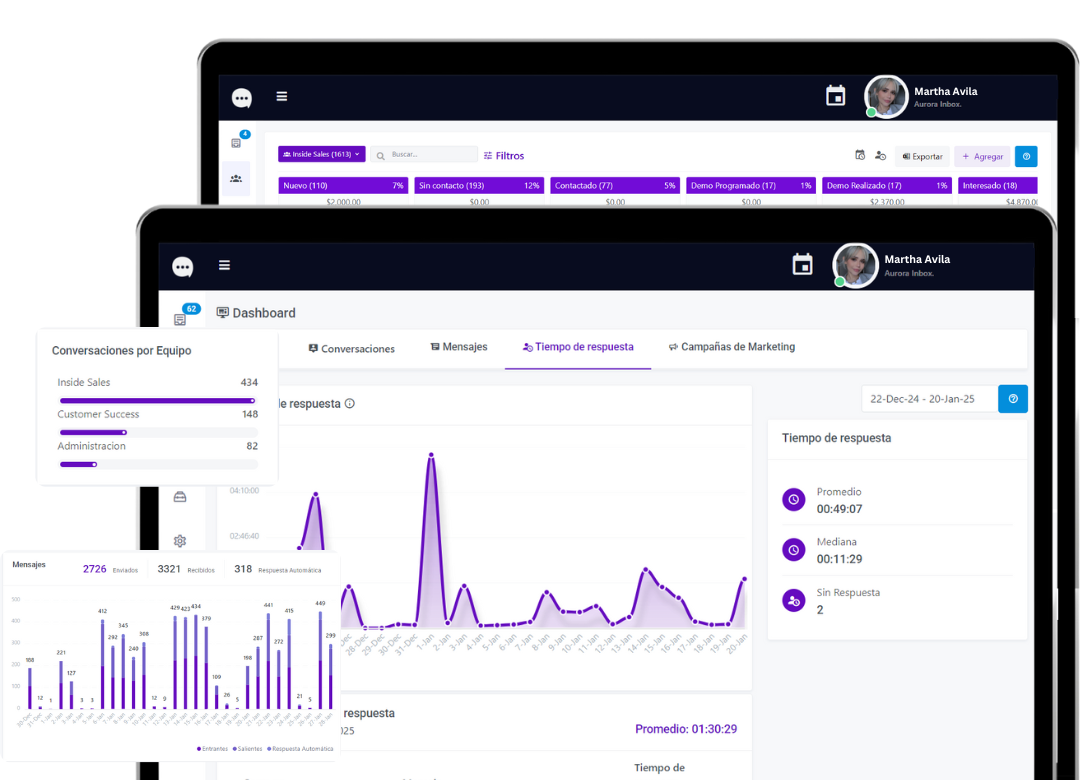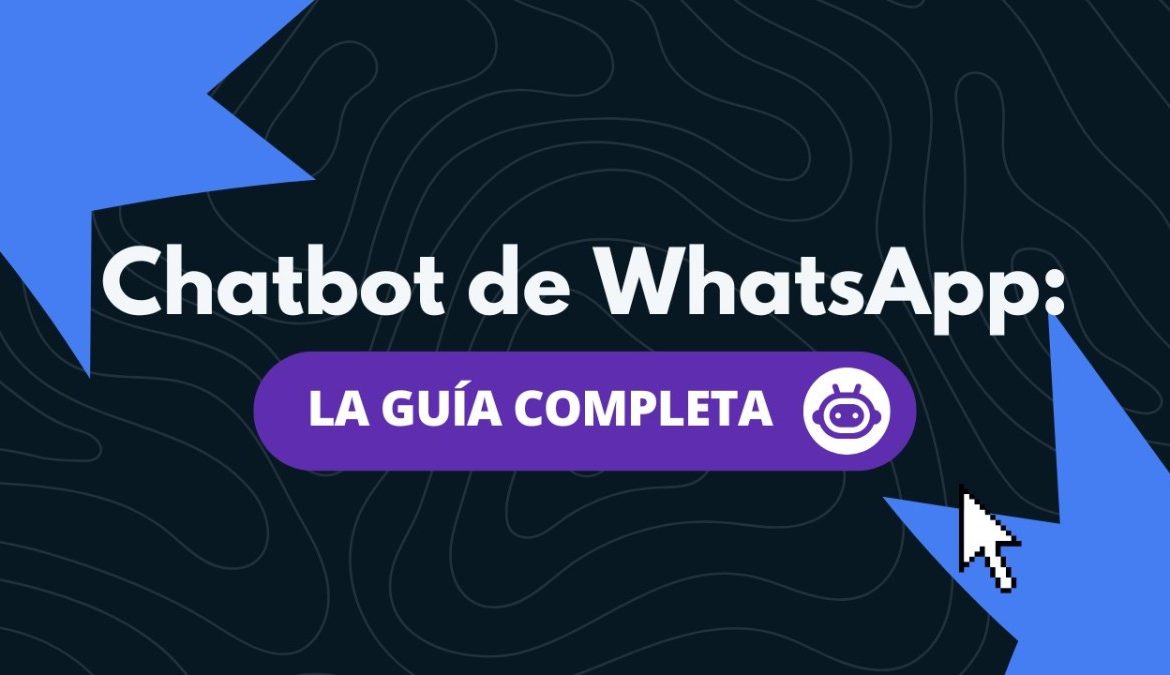In the era of instant messaging, WhatsApp is the preferred communication channel for millions of people around the world. For companies, this represents a great opportunity: being able to automate and streamline customer service, sales tracking and lead generation. This is where the relevance comes into play. WhatsApp chatbot, a tool that allows you to answer queries 24/7, reduce waiting times and provide a personalized experience.
In this comprehensive guide, you will learn:
- What is a WhatsApp chatbot? and why is it so important today?
- How do you integrate with the API? WhatsApp Business?
- Benefits and use cases most relevant to your business.
- The step-by-step process to implement your own chatbot.
- Tips and best practices to get the most out of the AI in WhatsApp.
What is a WhatsApp Chatbot?
A WhatsApp Chatbot It is a software programmed for simulate a human conversation on the WhatsApp messaging platform. These bots can automatically respond to user messages, answer frequently asked questions, collect data, and even process orders or payments, all without human intervention or with a seamless handover to an agent when necessary.
1.1 AI Chatbot for WhatsApp
When integrated artificial intelligence (AI) to the chatbot, it becomes more “intelligent”, capable of recognizing the intention of the questions, adapting to the context and providing more precise answers. AI for WhatsApp allows you to automate and scale customer service, optimizing the user experience.
Benefits of a Chatbot for WhatsApp
2.1 24/7 Availability
A chatbot doesn't sleep or take vacations. Provide ongoing support increases the customer satisfaction and avoid losing sales or leads outside of business hours.
2.2 Immediate responses
In a world where immediacy is key, a bot answers instantly, generating trust and improving the user experience.
2.3 Human resources optimization
To the Automate responses to frequently asked questions and simple tasks, your team can focus on Higher value tasks, such as customer loyalty or closing complex sales.
2.4 Scalability
A chatbot for WhatsApp can handle multiple conversations simultaneously without sacrificing response quality, something impossible for a single human operator.
2.5 Data and insights collection
Chatbots allow track interactions with customers, identify patterns and gather valuable information for decision making. marketing and sales.
How does the integration with WhatsApp Business API work?
To create a robust chatbot that meets the official policies of WhatsApp, it is necessary to use the WhatsApp Business API, which offers:
- Reliability and safety at the business level.
- Advanced Features messaging (templates, notifications, etc.).
- Greater automation capacity.
The integration process typically includes:
- Register your business with an official WhatsApp provider or partner.
- Setting up your WhatsApp Business account (get phone number and API credentials).
- Connecting the chatbot platform with the API to send and receive messages.
Note: Aurora Inbox, for example, provides support for configuration and integration with the WhatsApp Business API, making it easy to create and manage your chatbot.
If you want to know how to configure a Chatbot with Aurora Inbox we recommend reading the following article where we explain How to set up a Chatbot for WhatsApp?
Step by step to create your WhatsApp Chatbot
4.1 Define the chatbot's objectives
- Customer Service: Reduce response times, answer FAQs, etc.
- Lead generation: Collect contact data and qualify opportunities.
- Sales automation: Offer a catalog of products/services, process orders.
4.2 Designing the conversational flow
- Map your customers' most frequently asked questions.
- Create conversation blocks (welcome message, options menu, common questions, closing, etc.).
- Determine Break points where the conversation must be escalated to a human agent.
4.3 Choosing the chatbot platform
- Find a platform that supports the WhatsApp API, which offers tools for AI and that allows a multichannel management if you also use other means.
- Aurora Inbox, for example, allows a quick setup and the ability to incorporate AI to respond automatically or escalate to human agents.
4.4 Integrate with WhatsApp Business API
- Follow the instructions of the supplier or Official Partner WhatsApp to gain access to the API.
- Configure webhooks or endpoints to receive and send messages.
- Perform evidence of functionality and security.
4.5 Train the bot (if it has AI)
- Feed the database with Frequently used phrases and possible variations in user queries.
- Adjust the language models to achieve more natural and contextual responses.
- It incorporates the ability to understand and identify keywords such as “price”, “shipping”, “availability”, etc.
4.6 Launch and final testing
- Make sure your chatbot complies with WhatsApp policies (allowed content, business verification, etc.).
- Perform evidence with real users to fix bugs and improve the experience.
- Monitor metrics key such as response rate, average resolution time, customer satisfaction, etc.
Use cases and practical examples
5.1 Automated customer service
Imagine a school or institution who wants to promote courses to their students, with a Chatbot with Artificial Intelligence they could send mass messages to certain users who might be interested in courses and in turn, respond to all of them automatically.
5.2 Technical support
Service companies (telecommunications, software, etc.) can guide their clients in quick fixes through a chatbot that provides tutorials or steps to follow.
5.3 Sales and promotion of products
A bot can automatically display a product catalog, apply filters according to the client's preferences and even forward to the checkout or payment gateway. For example, a automotive agency could provide information on available vehicles and their characteristics according to the client's profile.
5.4 Reservations and appointments
Medical centers, Real estate and Travel agencies can enable the appointment scheduling or reservations, sending reminders and confirmations instantly.
Best practices for implementing a successful chatbot
- Natural and close language
Design messages to be fluid and friendly, avoiding robotic or overly formal texts. - Clear boundaries
Tell the user from the start what the chatbot can and cannot do. Leave clear options for speaking to a human agent. - Segmentation and personalization
Uses the information the user provides to offer more accurate answers. personalized. - Frequent updates
Adjust the chatbot as you collect data about interactions and learn from them feedbacks received. - Compliance with policies and data protection
Make sure you comply with privacy regulations (e.g. GDPR in Europe or equivalent in your region) and WhatsApp policies.
Frequent questions
Do I need programming knowledge to create a WhatsApp chatbot?
Not always. There are chatbot platforms (like Aurora Inbox) that offer graphical interfaces and step-by-step guides to set up your bot without any coding. For more advanced features, you may need some technical help.
What is the difference between WhatsApp Business and WhatsApp Business API?
- WhatsApp Business (App): A mobile app for small businesses with basic features like quick replies, labels, and simple automated messages.
- WhatsApp Business API: a business solution which requires additional configuration and allows more complex integrations (chatbots, CRM, AI, etc.).
How can I measure the success of my WhatsApp chatbot?
Some useful metrics are:
- Immediate response rate (how quickly he answers).
- Satisfaction rate (NPS or quick post-conversation surveys).
- Resolution time (how long it takes for consultations to be successfully completed).
- Lead conversion (how many sales or appointments are achieved thanks to the chatbot).
To find out more, we recommend you read the following article, where we explain How to measure the success of a WhatsApp chatbot?
The future of automation with WhatsApp
A chatbot for WhatsApp has become an essential tool for companies of all sizes. From SMEs looking to streamline customer service to large corporations requiring a scalable and automated service. Integrate AI and use the WhatsApp Business API It will allow you to offer a first-class experience to your customers, while optimizing resources and accelerating your sales processes.
If you are looking to implement a WhatsApp chatbot easily and safely, Aurora Inbox (you can link to your product or contact page) offers:
- Consolidation of conversations in a single inbox.
- Integration with the WhatsApp Business API.
- Advanced automation with artificial intelligence.
- Insights and analytics to evaluate the performance of your team.
Optimize your business today!
Find out how Aurora Inbox's AI agent for WhatsApp can revolutionize your customer service. Schedule a meeting to meet with him and take your service to the next level.
We are here to help you grow!




